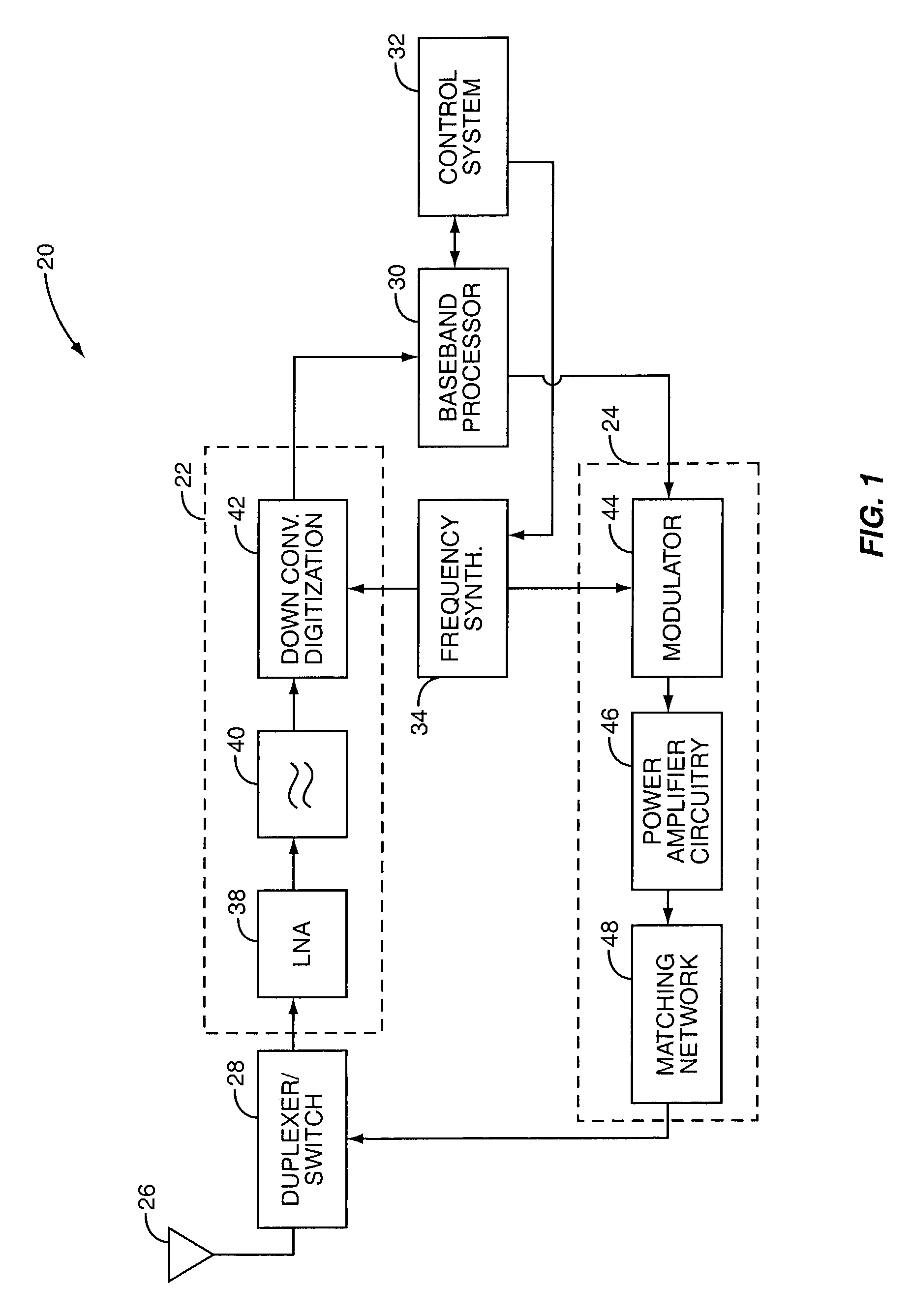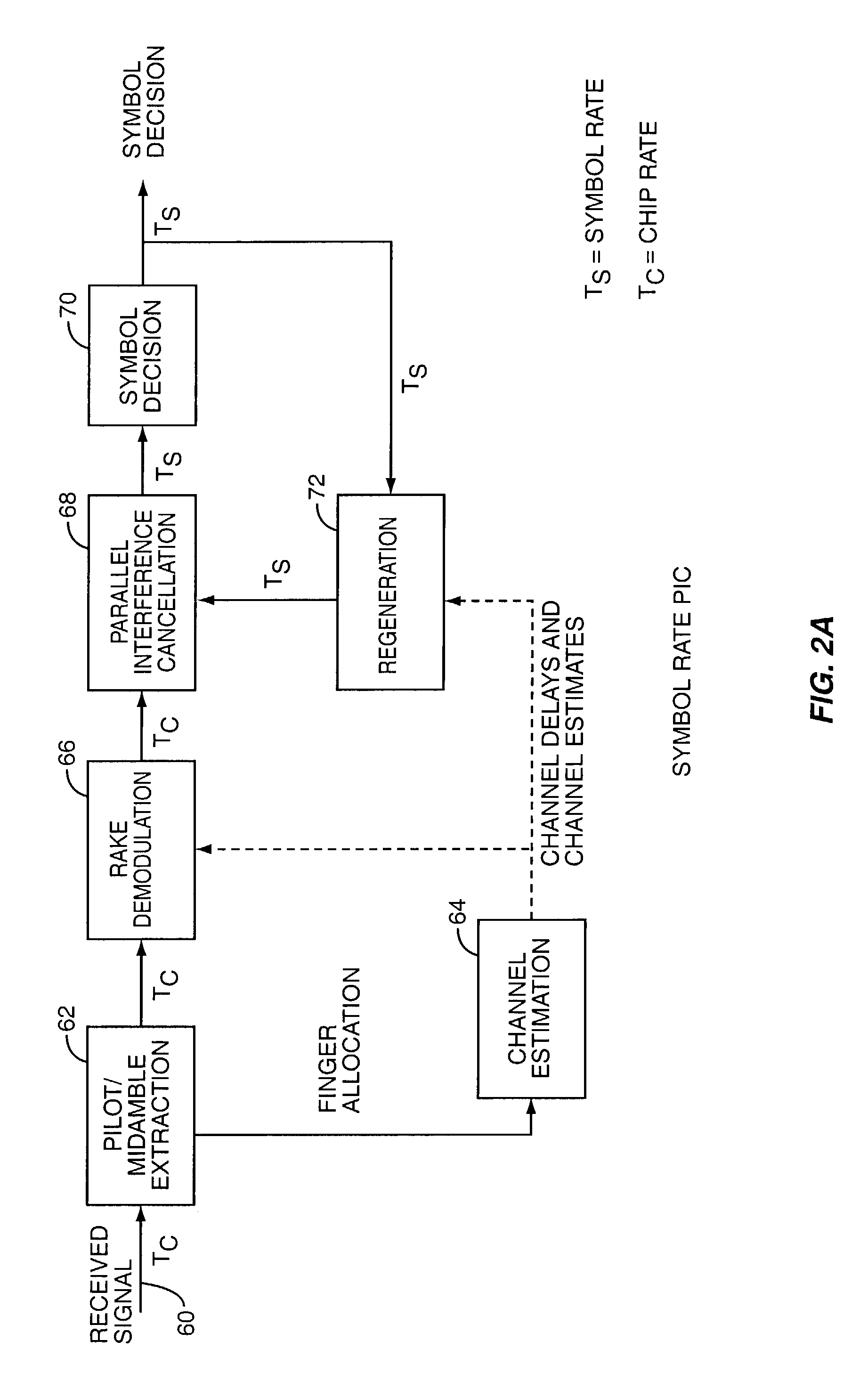Low complexity interference cancellation
a low-complex interference and cancellation technology, applied in the field of low-complex interference cancellation, can solve the problems of significant increase in the complexity of parallel interference cancellation, limit the system capacity and performance, etc., and achieve the effect of low-complex baseband processing
- Summary
- Abstract
- Description
- Claims
- Application Information
AI Technical Summary
Benefits of technology
Problems solved by technology
Method used
Image
Examples
Embodiment Construction
[0022]The embodiments set forth below represent the necessary information to enable those skilled in the art to practice the invention and illustrate the best mode of practicing the invention. Upon reading the following description in light of the accompanying drawing figures, those skilled in the art will understand the concepts of the invention and will recognize applications of these concepts not particularly addressed herein. It should be understood that these concepts and applications fall within the scope of the disclosure and the accompanying claims.
[0023]The present invention may be incorporated in a base station transceiver 20 as illustrated in FIG. 1 and will include a receiver front end 22, a radio frequency transmitter section 24, an antenna 26, a duplexer or switch 28, a baseband processor 30, a control system 32, and a frequency synthesizer 34. The receiver front end 22 receives information bearing radio frequency signals from one or more remote transmitters provided b...
PUM
 Login to View More
Login to View More Abstract
Description
Claims
Application Information
 Login to View More
Login to View More - R&D
- Intellectual Property
- Life Sciences
- Materials
- Tech Scout
- Unparalleled Data Quality
- Higher Quality Content
- 60% Fewer Hallucinations
Browse by: Latest US Patents, China's latest patents, Technical Efficacy Thesaurus, Application Domain, Technology Topic, Popular Technical Reports.
© 2025 PatSnap. All rights reserved.Legal|Privacy policy|Modern Slavery Act Transparency Statement|Sitemap|About US| Contact US: help@patsnap.com



